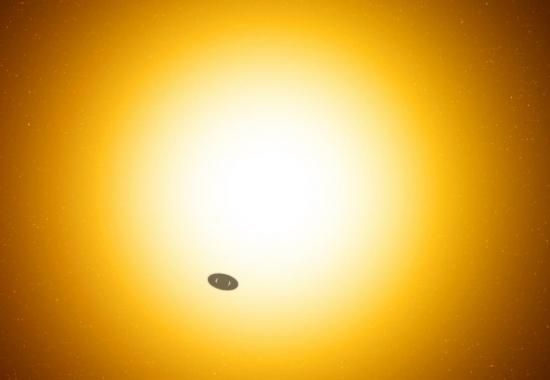Several of the exoplanets discovered so far have exceptionally low densities. But that could be a misconception, astronomers say.
Some exoplanets with surprisingly low density might not be “cotton candy planets” at all, but have rings – like Saturn. That’s what two U.S. astronomers, Anthony Piro of the Carnegie Instituion for Science and Shreyas Vissapragada of the California Institute of Technology, have proposed and now published their findings in the Astronomical Journal.
Their hypothesis could explain at least some of the surprising measurements, which had provided again and again and last few months for sensation. At that time, NASA had confirmed that three exoplanets in the star system Kepler 51 all have a density of only 0.3 g/cm3 – comparable to that of cotton candy.
They examined over altogether ten exoplanets, whose density is indicated at present with values between 0.06 and 0.31 g/cm3. This results from their size and the mass, which can be measured or calculated. For this it is determined how long they cover their star, if they pass in front of it from our perspective and how strongly they pull at this star with their own mass. The two astronomers think now, however, that the measurement of the size can be falsified.
A smaller exoplanet would obscure its star just as much if it were surrounded by rings, they think. They have tested this hypothesis for the “cotton candy planets” known so far and consider it a possible explanation in at least two cases. Since most of these exoplanets orbit relatively closely around their stars, the rings must be made of rock – and not ice, as is the case with Saturn. Because that would melt. But that would limit the maximum circumference of the rings, because otherwise they would form a moon.
These limitations ensure that this hypothesis cannot explain all the “cotton candy” planets – such as those around Kepler 51. At present, their theory also cannot be further tested experimentally, the two astronomers admit. But with NASA’s planned James Webb Space Telescope, that should be possible, they add.
Other explanations
For most of the unusually light exoplanets it needs thus further alternative explanations. The exoplanets Kepler 51b, 51c and 51d for instance might be comparatively young, NASA had explained. They could have originated further outside in their star system and then migrated inward. Their atmospheres of hydrogen and helium are so inflated that they appear about as large as Saturn (without rings) and Jupiter, although they have only about two to seven times the mass of our Earth. So close to their star, they should now lose their atmosphere comparatively quickly.

